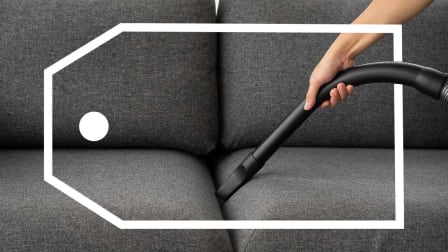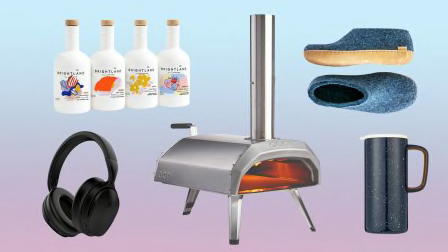The Hidden Risks of Buy-Now, Pay-Later Plans
Spreading out payments is convenient, but you don't get the same protections as credit cards

More online shoppers are encountering a new payment method at the checkout page: put down 25 percent of purchase price, then pay off the rest in three equal installments over six weeks—no fees or interest charges.
Known as Buy Now, Pay Later, or BNPL, this type of instant, no-cost financing has become increasingly popular during the COVID-19 pandemic. Some hard-pressed Americans use it to stretch out payments for necessities, while others are buying big-ticket items without having to put down the full amount.
These short-term loans are also popular with consumers who can't qualify for a credit card or other financing but would still like to enjoy the advantage of spreading out payments.
Leisa Meredith, a Tampa resident, for example, keeps a tight rein on spending as she rebuilds financially after a bankruptcy. So she opts for this payment method to buy shoes for her grandchildren.
How the System Works
Buy-now, pay-later programs, also called point-of-sale loans, work like a layaway plan in reverse. Instead of making payments over time in order to qualify for a purchase, you receive your item up front, then make your payments on schedule.
For online shoppers, you’ll see a pay later button when you reach the check-out page on a participating retailer’s website. For those shopping in brick-and-mortar stores, participating retailers typically let you set up a payment option through an app on your smartphone.
Getting approved for a BNPL account, if you haven’t done it ahead of time, usually takes only a few seconds. Most programs generally do only a soft credit check to confirm your information, with no impact to your credit score. You can choose to link your payments to your debit card, bank account, or even a credit card, depending on the lender.
The typical arrangement is to put down 25 percent of the bill and pay the rest every two weeks in three equal, interest-free installments. But BNPL plans may have varied payment arrangements (more on that below).
You may also be offered a pay-later plan from more established financial services firms. Last fall PayPal introduced Pay in 4—like the other BNPL offerings, this plan allows shoppers to split payments into four equal, interest free installments. PayPal customers must apply separately for this plan.
American Express, Citigroup, and JP Morgan Chase have launched installment plans for their cardholders, giving them the option of spreading large purchases into a series of payments when they get their statements. These programs generally carry a fee or interest charges that may be lower than regular credit card rates.
Be aware, when you click that BNPL button, not every purchase may be approved. The financial tech companies place limits on the amounts you can defer, which are geared to your payment history, as well as the retailer’s policies.
Afterpay, which can be used at thousands of retailers, including Dillard’s, Bed Bath & Beyond, and Lululemon, caps spending between $1,000 to $2,000, says Melissa Davis, head of North America, although customers with strong repayment records can qualify for higher amounts.
Most shoppers actually make relatively modest purchases. At Quadpay, another BNPL lender, transactions average $200, says Shira Schwartz, vice president of marketing, with customers often using the plan for fashion and beauty products, gaming items, as well as food delivery.
Some luxury retailers are starting to offer point-of-sale loans as well. Peloton, the high-end exercise bike (cost: nearly $2,000 or more), has partnered with Affirm to give customers the option of no-interest, no-fee installment plans for as long as 39 months. Peloton purchases recently accounted for 28 percent of Affirm’s revenue, according to its IPO filing.
What Can Go Wrong
One obvious risk with BNPL programs is that those seemingly affordable payments may tempt you to splurge.
In a survey last year by Cardify.ai, nearly half of BNPL shoppers said they increased their spending between 10 percent to over 40 percent when they use these plans compared with using a credit card. Two-thirds of BNPL customers said they are buying jewelry and other “want” items that they might not otherwise purchase, the survey found.
Consumers may also find that installment payments are harder to track. A study last year by Cornerstone Advisors, a banking consulting firm in Scottsdale, Ariz., found that over the past two years, 43 percent of those who used BNPL services were late with a payment. Of those, two-thirds said the reason for falling behind was that they simply lost track of the payments, not because they did not have the money.
“For most people having the money was not the problem—it was the management piece of it,” says Ron Shevlin, director of research at Cornerstone Advisors.
You may also face challenges if you have a problem with your purchase, such as obtaining a refund for a product that didn’t arrive or turned out to be defective. That’s because you will have to meet the requirements of both the BNPL lender and the retailer.
Unlike credit card issuers, which are subject to strong federal regulation, these short-term lending programs are relatively new and receive minimal, inconsistent oversight from federal and state bank regulators.
“Buy now pay later programs fall into a regulatory gray area and do not have the same consumer protections as credit cards,” says Chuck Bell, the Consumer Reports advocate.
Unlike credit card issuers, who typically stop payments when a transaction is disputed, BNPL lenders generally require consumers to first contact the merchant to get credit for a return or refund. Until the lender is notified by the retailer that the transaction has been voided or a refund issued, you may have to continue to make payments on your loan.
That often leaves consumers on their own to ensure that the merchant follows through and the payment is credited by the BNPL lender. These tasks can be challenging, especially during a pandemic.
For LT Horhn, 48, a Los Angeles resident, obtaining a refund from Sezzle for a $200 handbag turned out to be a long ordeal.
“I was shopping online last September and clicked—then I had second thoughts, since I didn’t know the retailer,” says Horhn.
She tried to cancel the purchase, but she could not reach the retailer by phone, and Sezzle’s customer representative told her that all requests must go through the merchant directly.
Horhn sent back the bag, which was poor quality, she says. But the address given to her by the retailer turned out to be false, and the package was returned as undeliverable. Unable to get a refund from Sezzle, she canceled payments through her bank, but the first one for $51 had already gone through.
Upon being contacted by Consumer Reports, Sezzle CEO Charlie Youakim reviewed Horhn's account, and she received a refund. Youakim also says Horhn should have initiated a dispute.
Horhn responded that she did not understand where to do this on the website.
How to Avoid Problems
1. Be realistic about spending. Your BNPL lender may allow you to spend as much as $1,000 in one shot, but that doesn’t mean you should.
So take a hard look at your budget and your income to understand how much free cash you will have coming in.
Once you understand your spending limits, make sure you stay on track, perhaps by keeping a strict list of planned purchases. And earmark an account for those future payments.
“You want to make sure you really have the money set aside for those bills, when they come due,” says Marguerita Cheng, a certified financial planner in Gaithersburg, Md.
2. Check for pitfalls in the FAQs. “These pay-later services are still the Wild West—they come in all types, some with fees and interest charges and some without,” says Matt Schulz, chief industry analyst at Lending Tree. “It’s easy to get confused, especially if you sign up with more than one lender.”
So check the terms of the loans on the lender’s website, which are typically laid out on a support or FAQ page, or call and ask. Is the late fee imposed automatically, or can you get it waived if you pay a day late? If you miss a payment, are you barred from future purchases? Will late or missed payments be reported to a credit bureau, possibly hurting your credit score?
Be sure you are getting the rules for the specific type of loan you are using, since some lenders provide more than one type of financing program. Affirm, for example, offers loans of varying lengths, and the terms and interest rates can vary by retailer and your credit profile.
3. Set up automatic payments. As the Cornerstone Research showed, consumers can easily lose track of their BNPL payments. One likely reason these bills are short-term and come due biweekly rather than monthly, says Shevlin. Juggling multiple loans can add to the confusion.
Some consumers may also view the late fee as a minor cost, but they can defeat the purpose of using these programs, says Ted Rossman, industry analyst at CreditCards.com.
Say you end up paying $30 in late fees on a $100 item—that effectively raises the price of the item by 30 percent. If you don’t have enough money in the bank to pay that bill, you may get hit by a $35 overdraft fee on top of that.
The most foolproof way to avoid these costs is to automate the entire process. Schedule regular payments through your bank account or card.
You can also set up text or email reminders that payments are due. Some lenders do this automatically.
4. Don’t use for obscure retailers or travel. Unless you’re spending a small amount that you won’t miss, an installment loan program isn’t the best way to try out a new product or service.
“If you’re using a buy now pay later plan, you probably want to stick with well-known retailers with track records for delivering on time and responding quickly if there’s an issue with your purchase,” says Rossman.
You may also want to think twice about using these plans for travel arrangements, such as buying airline tickets, says Chuck Bell, the Consumer Reports advocate. When dealing with online travel booking sites, especially, you may come up against inflexible refund policies if your travel plans change or are canceled.
5. Consider using a credit card instead. While point of sale loans can be convenient, you may be better off in the long run if you use a credit card, as long you can pay off the full balance on time.
“By using a credit card, you can build a good credit score, which is important for your overall finances,” says Schulz. (Learn smart strategies for improving your credit score.) Your purchases may also qualify for rewards, such as cash back or discounts, which can boost your budget.
You also have stronger consumer protection when you use a credit card. In addition to investigation of disputed charges, some issuers may offer purchase protection that will cover your costs if items are damaged or stolen.
In these uncertain times, it can be a major benefit to have additional help if something goes wrong.




















